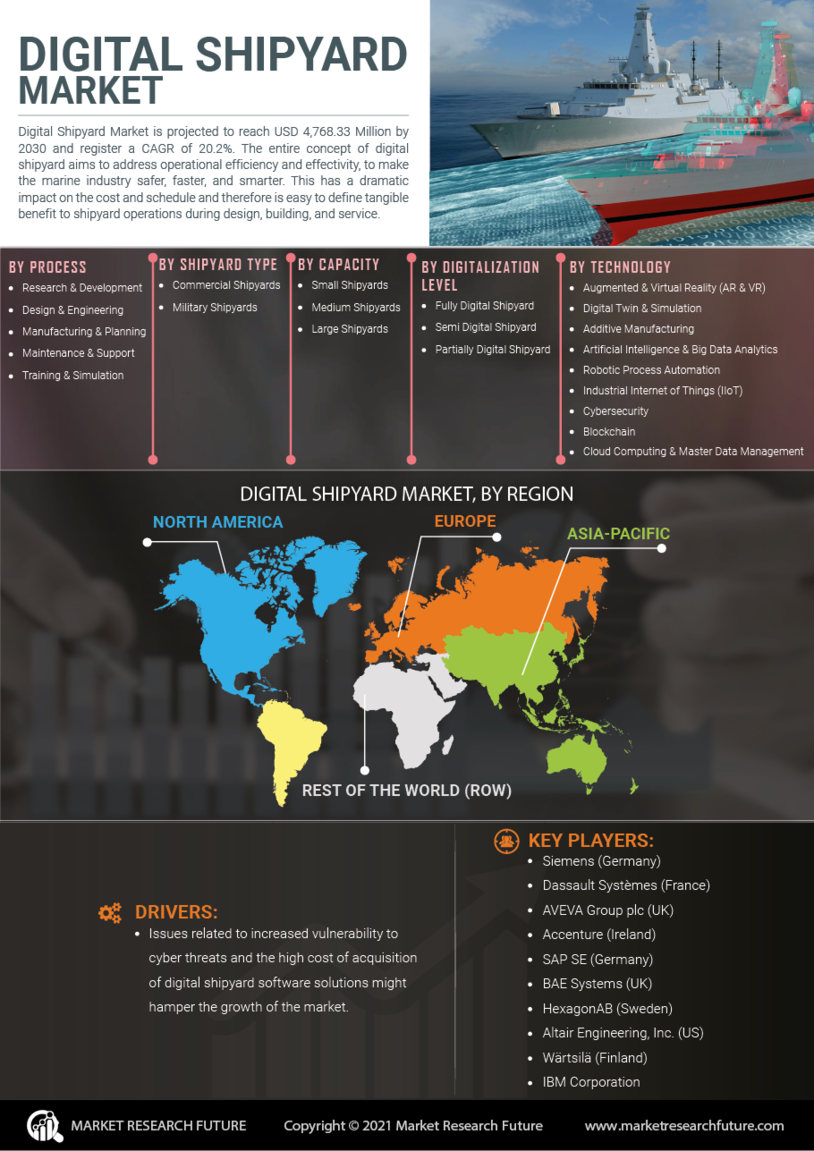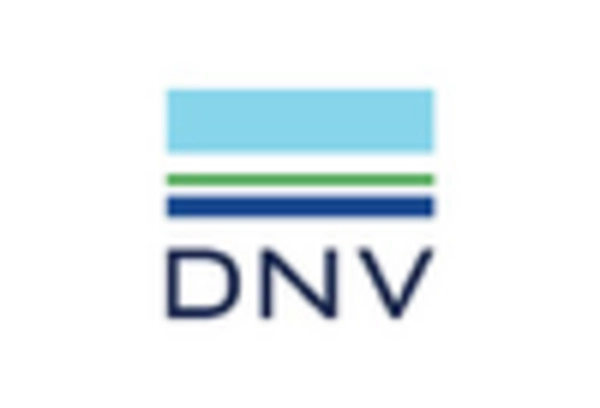The Digital Shipyard Market is currently characterized by a dynamic competitive landscape, driven by technological advancements and the increasing demand for efficiency in shipbuilding processes. Key players such as Siemens (DE), General Electric (US), and Wärtsilä (FI) are at the forefront, each adopting distinct strategies to enhance their market positioning. Siemens (DE) focuses on digital transformation initiatives, leveraging its expertise in automation and data analytics to optimize shipyard operations. General Electric (US) emphasizes partnerships with naval defense contractors to integrate advanced digital solutions, thereby enhancing operational efficiency. Meanwhile, Wärtsilä (FI) is investing in sustainable technologies, aligning its offerings with the growing emphasis on environmental responsibility in maritime operations. Collectively, these strategies contribute to a competitive environment that prioritizes innovation and operational excellence.
In terms of business tactics, companies are increasingly localizing manufacturing and optimizing supply chains to enhance responsiveness to market demands. The competitive structure of the Digital Shipyard Market appears moderately fragmented, with several key players exerting influence over various segments. This fragmentation allows for a diverse range of solutions, catering to different customer needs while fostering healthy competition among established and emerging players.
In November 2025, Siemens (DE) announced a strategic partnership with a leading naval architecture firm to develop a next-generation digital twin technology aimed at improving design accuracy and reducing time-to-market for new vessels. This initiative is expected to enhance Siemens' competitive edge by providing clients with advanced simulation capabilities, thereby streamlining the design process and minimizing costly revisions. The integration of digital twin technology signifies a pivotal shift towards more efficient shipbuilding practices.
In October 2025, General Electric (US) launched a new suite of predictive maintenance tools designed specifically for the maritime sector. This suite utilizes AI and machine learning algorithms to forecast equipment failures, thereby reducing downtime and maintenance costs for ship operators. The introduction of these tools reflects General Electric's commitment to leveraging cutting-edge technology to enhance operational reliability, which is increasingly critical in a market that demands high availability and performance.
In September 2025, Wärtsilä (FI) unveiled its latest eco-friendly propulsion system, which utilizes hybrid technology to significantly reduce emissions from marine vessels. This development aligns with global regulatory trends favoring sustainability and positions Wärtsilä as a leader in environmentally responsible shipbuilding solutions. The emphasis on hybrid systems not only addresses regulatory compliance but also appeals to a growing segment of environmentally conscious customers.
As of December 2025, the Digital Shipyard Market is witnessing trends that emphasize digitalization, sustainability, and the integration of AI technologies. Strategic alliances among key players are increasingly shaping the competitive landscape, fostering innovation and collaboration. The shift from price-based competition to a focus on technological advancement and supply chain reliability is evident, suggesting that future differentiation will hinge on the ability to innovate and adapt to evolving market demands.

















Leave a Comment